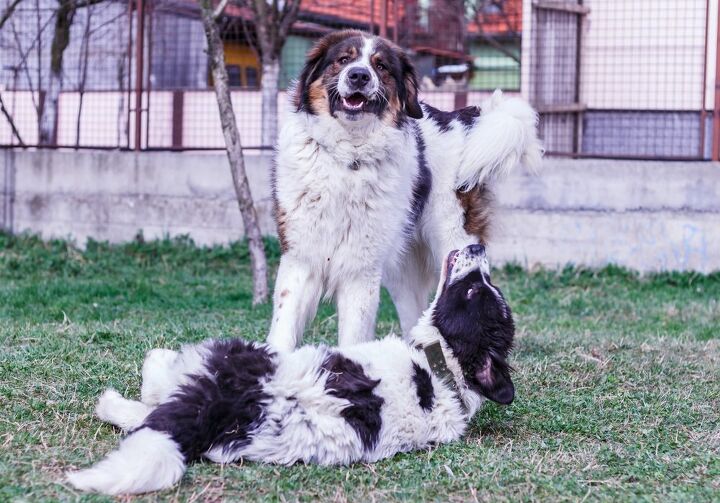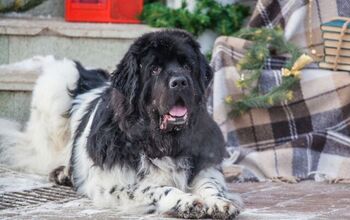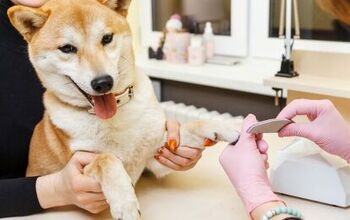Tornjak


About Tornjak
The first thing you are likely to notice about the Tornjak breed is its thick, wooly coat. These dogs were developed in Bosnia and Croatia as mountain sheep dogs, so they require a thick coat to keep them warm up in the mountains. Though the Tornjak is not the largest breed of dog you could find, he is still fairly sizeable and has a strong, muscular build. These dogs were bred to protect sheep, so they are naturally vigilant and alert. As a family pet, this dog tends to be calm and peaceful, unlikely to exhibit any aggression toward other animals or humans. If you are looking for a friendly and devoted companion, the Tornjak may be the dog for you.
The first thing you are likely to notice about the Tornjak breed is its thick, wooly coat.
The Tornjak is a rare livestock protection breed that comes from Bosnia, Herzegovina, and Croatia. These dogs share a great many characteristics with other mountain dogs and it is thought that the dog may actually be a very old breed with its origins dating back to ancient times. The first written records of the breed date back to the 9th century, with other mentions coming later in the 11th and 14th centuries. Unfortunately, as the practice of sheepherding diminished, so did the Tornjak breed. It wasn’t until the 1970s when a group of cynologists started to collect remaining specimens of the breed that the Tornjak was revived. Today it is part of the AKC Foundation Stock Service Program, the first step in becoming recognized by the AKC.
The Tornjak was developed in Bosnia, Herzegovina, and Croatia, likely bred from the Tibetan Mastiff, though the exact origins of the breed are unknown.
As a large-breed dog, the Tornjak requires a high-quality dog food diet that has been formulated for large-breed dogs. During the breed’s development it was commonly underfed. As a result, the modern Tornjak has fairly low needs for protein – a high-protein diet can actually lead to health problems.
This breed is intelligent and decisive so a firm and consistent hand in training is recommended to keep the dog from becoming willful.
The Tornjak is most commonly used for herding and protecting livestock, so he can be trained for either of these purposes. This breed is intelligent and decisive so a firm and consistent hand in training is recommended to keep the dog from becoming willful. Tornjaks are quick to learn and they do not forget things quickly, so you are only likely to need a few repetitions when training.
The average weight of an adult female Tornjak is between 60 and 88 lbs. while and adult male weighs between 77 and 110 lbs.
The Tornjak is a calm and peaceful breed by nature – he may be wary around strangers but is unlikely to be aggressive around other dogs or humans. This breed is a natural watchdog, so he has an alert and vigilant temperament without being nervous. The Tornjak is undemanding in terms of exercise but he is social and loves to spend time with other dogs and his family. This breed can be emotional with family, forming a strong bond and being very devoted to his owners.
The Tornjak is a healthy breed in general, though too much protein in the diet has been known to cause certain health problems, especially with the coat. It is also worth noting that climbing stairs and other forms of strenuous exercise should be avoided during the first 6 months of age to avoid joint problems and the development of hip dysplasia.
The average life expectancy for this breed is fairly high for a large-breed dog, around 12 to 14 years.
The Tornjak is not very demanding in terms of exercise – he will do well with a long daily walk and plenty of play time, especially with other dogs.
The Tornjak is a calm and peaceful breed by nature – he may be wary around strangers but is unlikely to be aggressive around other dogs or humans.
The Tornjak has not yet been recognized by the AKC, but it has been admitted into the Foundation Stock Service Program. Once registration in the United States reaches 150 dogs, the breed will be accepted by the AKC. The Tornjak is currently recognized by the FCI.
Perhaps one of the most recognizable features of the Tornjak is his thick, wooly coat. As a mountain breed, the Tornjak’s coat is designed to protect him from the cold and harsh weather of his native habitat, but he will shed the thick coat for a lighter summer coat in warmer weather. The breed has a long top coat that is straight and hard textured with shorter hair on the face and the front of the legs. Common colors for this breed include white, black, yellow, brown, red, gray, and any combination of these colors, though the two main types are piebald and Irish spotting.
Tornjak puppies are somewhat slow to develop so it is best to avoid strenuous exercise during the first 9 to 12 months of age. After that time, puppies will enjoy spending time with other dogs and people. It is recommended that you start training and socialization at an early age to prevent the development of problem behaviors, though the Tornjak is unlikely to ever be aggressive around other dogs or humans.
Photo credit: F. S/Shutterstock; Simun Ascic/Shutterstock; Nikolina Mrakovic/Shutterstock

Kate Barrington is the loving owner of two cats (Bagel and Munchkin) and a noisy herd of guinea pigs. Having grown up with golden retrievers, Kate has a great deal of experience with dogs but labels herself a lover of all pets. Having received a Bachelor's degree in English, Kate has combined her love for pets and her passion for writing to create her own freelance writing business, specializing in the pet niche.
More by Kate Barrington

























